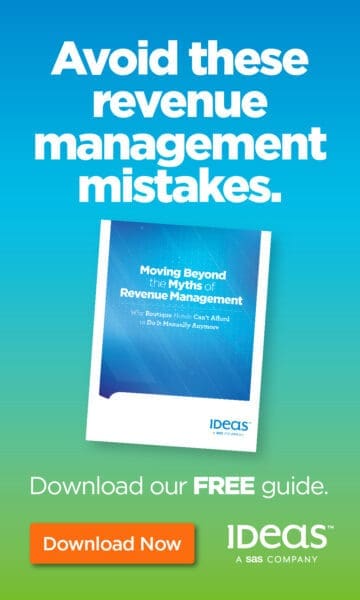 Many people have needless worries about the “threat” of automation. Mainly, people want to know if automation is a threat to their jobs. It’s a valid question, but one that comes from an incomplete understanding of what automation is and the benefits it provides.
Many people have needless worries about the “threat” of automation. Mainly, people want to know if automation is a threat to their jobs. It’s a valid question, but one that comes from an incomplete understanding of what automation is and the benefits it provides.
What is workplace automation?
When we speak of workplace automation, we’re talking about the ability to use computer programs and machines to carry out repetitive (sometimes dangerous), time-consuming tasks.
It can be as simple as extracting data from a spreadsheet, or it could be as complex as collecting spend data from multiple restaurants to find cost savings opportunities. In either scenario, machines do the heavy lifting and leave employees with more time to focus on high-level outreach, innovation, and customer service.
Why we need automation in the workplace
Repetitive tasks waste an estimated $1.8 trillion each year. How? Workers spend on average 520 hours a year (over one day of work each week) on mundane tasks that could easily be automated. Based on the average national hourly wage of $25.39, this translates to businesses losing $13,202.88 a year per employee on unproductive tasks.
Meanwhile, customers’ expectations continue to rise. We live in a world where you can have restaurant meals delivered to your door, pay for purchases with the wave of your phone, and build bridges using a 3-D printer.
The more accessible and deliverable a service can be, the greater the chance a business has of success. In the end, automation can help businesses work faster and deliver on expectations by freeing up employees from mundane tasks.
We can’t fight automation
You cannot change this rising tide of automation. It’s a powerful force, driving innovation and growth. And it will continue to be so because the market demands it. Automation offers a way for businesses to compete at a level they never thought possible.
Think back to the assembly line in the early 1920s. The ability to rapidly build cars and provide new products for consumers helped add jobs while speeding up the manufacturing process. But, it didn’t just provide new products and quick service, it redefined the industry.
The same is true of automation. Businesses continue to turn to technology as a way of staying competitive and fulfilling their customers’ expectations. Meanwhile, they’ll continue to discover new, innovative ways to make that happen.
Are workers worried about the threat of automation?
The threat of automation can be a scary scenario for many businesses and employees. Many workers worry that automation threatens their jobs.
In an Op-Ed titled, “American’s Perceptions of the Future of Work“, workers were asked about their feelings about automation.
Of the 1,500 workers surveyed, two-thirds said they consider automation helpful, as it provides tools, machines, and software that helps workers do their jobs more efficiently.
What jobs are threatened by automation?
Technology changes the workforce. It doesn’t wipe it out. There are plenty of jobs that expose people to unnecessary risk or jobs where people are simply inefficient.
Tasks like data entry, for instance, where human entry errors can lead to costly mistakes. Even dangerous tasks like milk tank inspections can be carried out by robots, removing the risk to human life.
As the roles shift away from these tasks, employees will have to adapt to new demands.
Employers have both the time and the foresight to start the tradition sooner rather than later, and it is to their advantage to do so.
Management’s role in reducing the threat of automation
Automation is here and will only continue to grow. Software development is happening like never before.
Businesses looking to remain competitive should adopt automated systems to help them achieve their goals. But that doesn’t mean that the workplace should abandon its current workforce in exchange for robots. Quite the opposite, actually.
By letting robots carry out the boring tasks, your staff can focus on high-level, complex tasks. Tasks robots cannot do. For instance, by collapsing your back office with custom workflow solutions, you have the freedom and the resources to position your staff into customer-facing positions. You can then provide those employees with the training they need to succeed in their new roles.
Many businesses lack a sound automation strategy. C-level executives sometimes lack the full perspective. They see automation as a tool and want to start plugging it into their business process management in every way they can to stay competitive. However, they forget that automating a poorly designed workflow doesn’t improve it. It just automates the inefficiency.
The real threat from automation
There is no “set it and forget it” with automation. While automation can help reduce boring, distracting, and time-consuming tasks, like any other tool, it needs oversight. Robots and programs follow guidelines – faulty programming or a misguided automation strategy can lead to costly mistakes.
As businesses grow, people need to evaluate which systems need to be automated next and which services should be overhauled to remain competitive in the digital era. Simply putting automation into place and letting it run without oversight isn’t a solution.
Businesses need to use the resources freed up to stay competitive, innovate and connect with customers on a deeper level. Failing to do this and relying wholeheartedly on automation as a panacea will give companies a false sense of security.
Worse, it can lead them to lose sight of automation’s real purpose: a tool to improve the customer experience. If your organization is going to get the most out of automation, it needs a strategy, and it needs to know what to expect once automation is in place.
How to prepare for a future with automation
Don’t let a fear of automation distract you from automating your business. And don’t fall into a “set-it-and-forget-it” mindset. Your company can reduce costs while increasing efficiencies with a strategy and the right automated solutions in place.
But automating a business isn’t easy. And without the right experience, efforts to automate systems can backfire, potentially ruining your company. You also need to track disruptive digital trends in mind so your company can adjust accordingly.
The best way to sidestep these obstacles is to embrace automation. Understand that streamlining workflows doesn’t remove jobs. It gives your staff more time to focus on more interesting, better tasks – tasks that grow your business, tasks that wow your customers, and tasks that give them a deeper sense of satisfaction in the work they do.
About the author
Kevin Shuler is the CEO of Quandary Consulting Group, a team of tech consultants that specialize in business transformation. They use integrations and automations to scale systems so businesses can continue to be successful.































